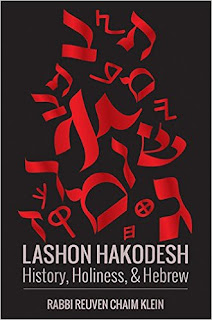Pshuto Shel Mikra
Pshuto Shel Mikra
Rabbi Yehuda Copperman z”l
Mosaica Press
Although I shy away from “parsha books” I
was excited to receive a copy of Rabbi Yehuda Copperman’s “Pshuto Shel Mikra”
which has now been translated into English by Rabbi Immanuel Bernstein. For
those who may not be familiar with the author, Rabbi Copperman was the founder
of the Jerusalem College for
religious women (Michlalah), and was an extremely beloved teacher, mentor,
and friend to all who knew him. He was a pioneer in the idea of combining
advanced Torah education with advanced secular education, an idea that many
went on to adapt. He was a formidable scholar in his own right.
Pshuto Shel Mikra reflects Rabbi Copperman’s
educational approach of encouraging his students to focus on the simple
meaning of texts. The current English edition (although
Rabbi Copperman was an English speaker, born in Dublin, he wrote almost
entirely in Hebrew) is a two-volume set with 1-7 essays per parsha. The essays draw
upon a wealth of sources culled
from Chazal, Rishonim, and Acharonim. As was Rabbi
Copperman’s lifelong “derech” the focus of the sefer is grasping a basic
reading of a Torah text and then understanding its overall role and contribution within the totality of Torah and, sometimes, it’s application and relevance to the halacha.
Allow me to share an example from week’s
Torah portion, Beshalach, on how the sefer works. The first essay opens by citing
the verse “He (Hashem) did not remove (“Yamish”) the pillar of cloud by day”
(Exodus 13:22). Rashi is then quoted as teaching “Hashem would not remove the
pillar of cloud by day, nor the pillar of fire by night.” By examining the word
“yamish” Rabbi Copperman has us realize that the Torah, per Rashi, is telling
us not that the cloud did not depart, but rather, it was not removed.
The essay then goes on to quote the Mizrachi who agrees that although Rashi
might have presented the preferred approach to understanding the word “yamish” he explains that it still would have been legitimate to suggest that it means the cloud did not depart.
We are then shown the Maharal’s approach who explains how a single word in a
verse cannot be extrapolated to give context to the entire verse. Rather, the entire
verse as a unit must be evaluated. This is due to the structure and holiness of
lashon hakodesh.
In other chapters, numerous approaches are
presented to a single verse, and contradictions between commentators, and even contradictions from a single commentator, are resolved.
Although the market is flooded with parsha
books, Pshuto Shel Mikra is unique and distinct in its service and is therefore
a worthwhile addition to any home library. It is certainly the “go-to” sefer for
anyone wanting a deeper understanding of the basic meaning of a text. That being said, Pshuto Shel Mikra is not an easy read – it is for those who want to really delve into
Scripture; it is not for those seeking a nice dvar Torah to share on the parsha.
One must really keep focus when reading Pshuto Shel Mikra as different approaches to a single verse are compared
and contrasted, contradictions resolved, and a new simple understanding of the
text is derived. It will open one’s eyes to the study of Chumash in a way not previously
experienced.
Pshuto Shel Mikra can be purchased through
his link: http://mosaicapress.com/pshuto-shel-mikra/


